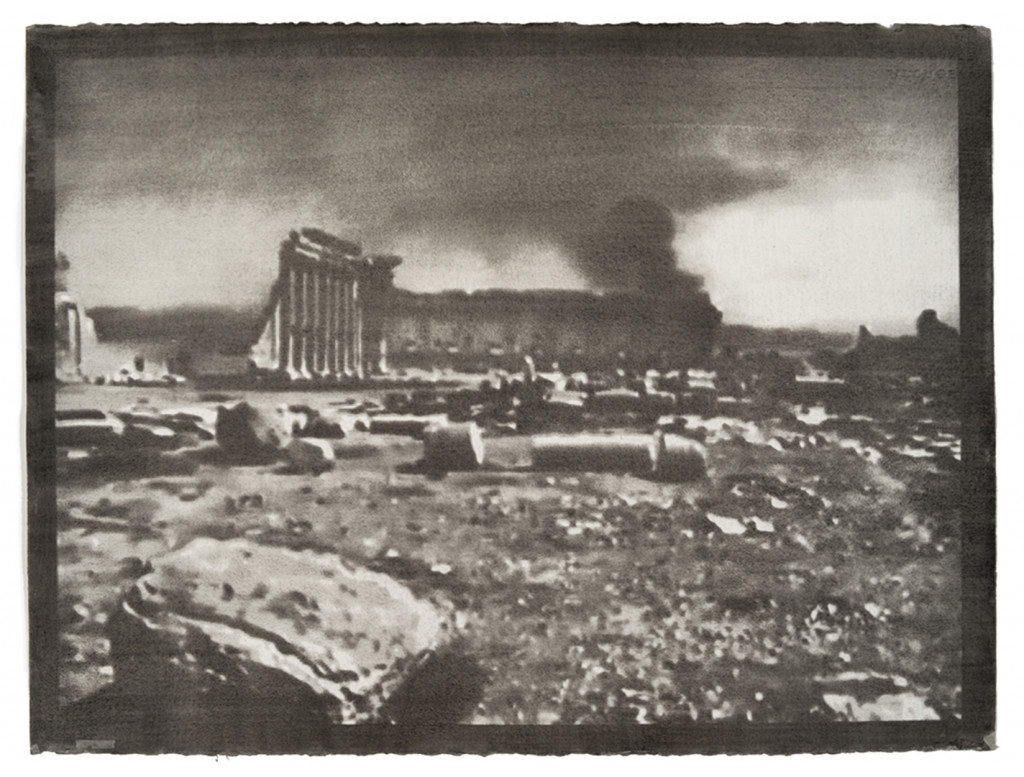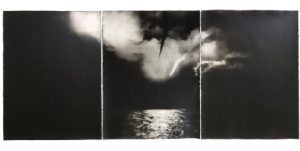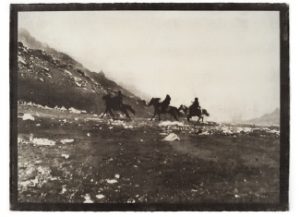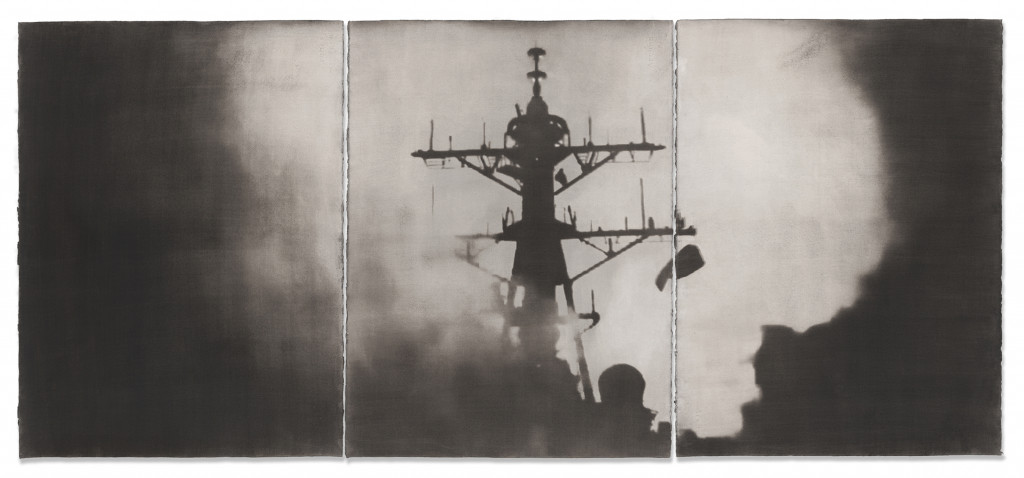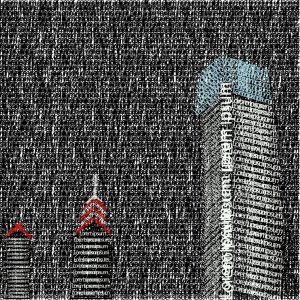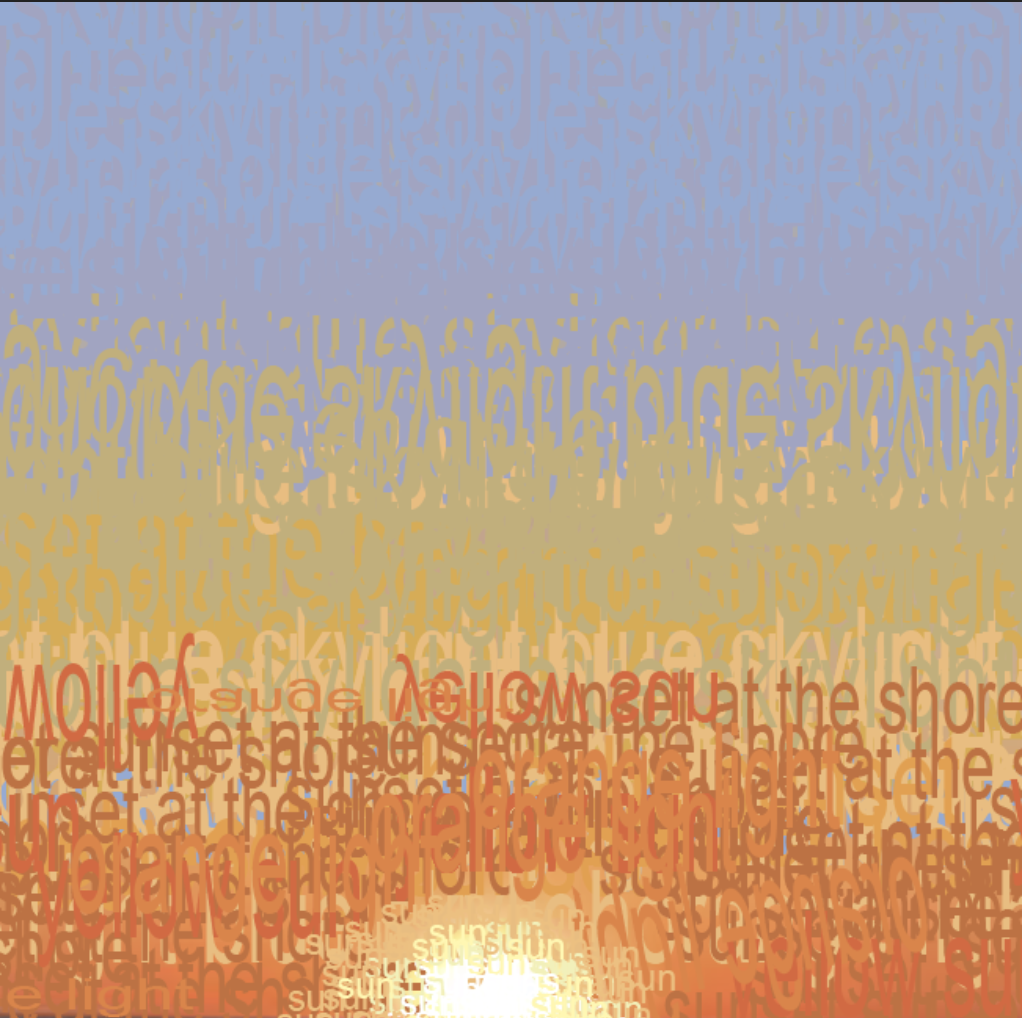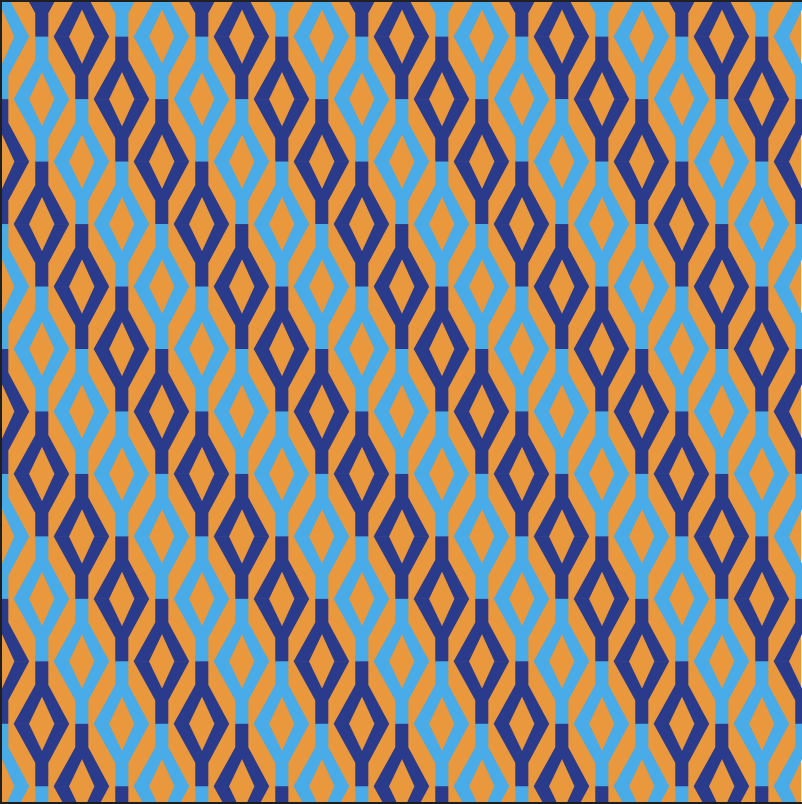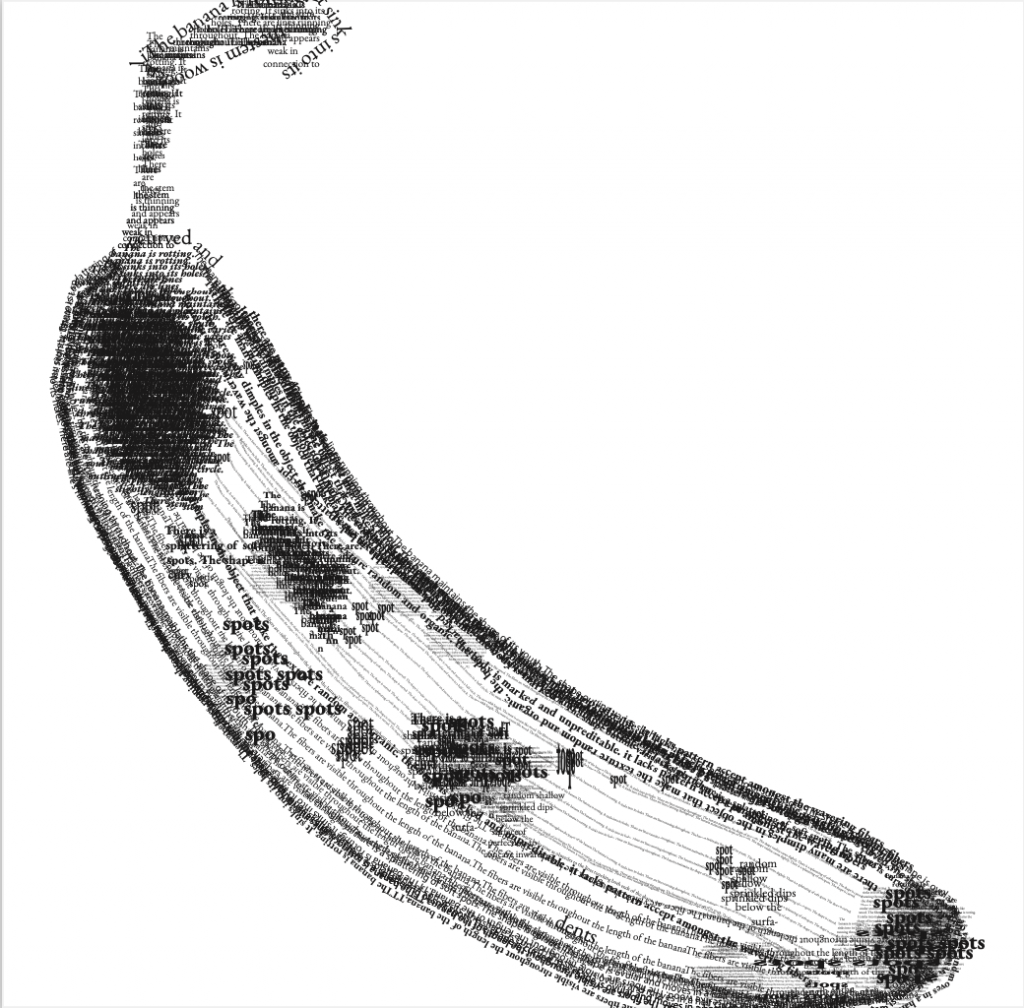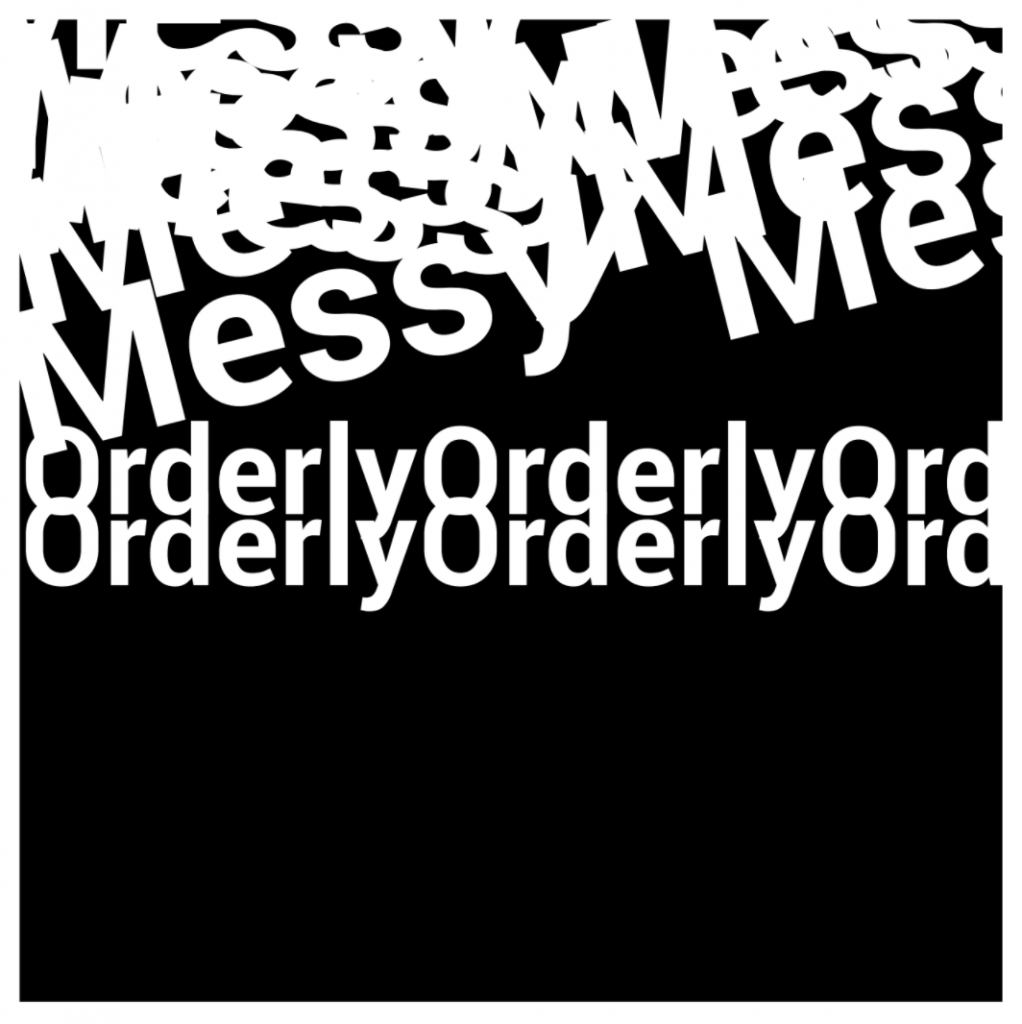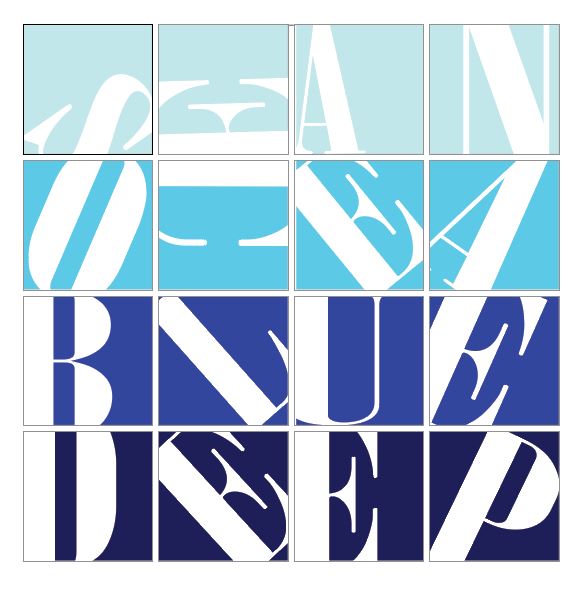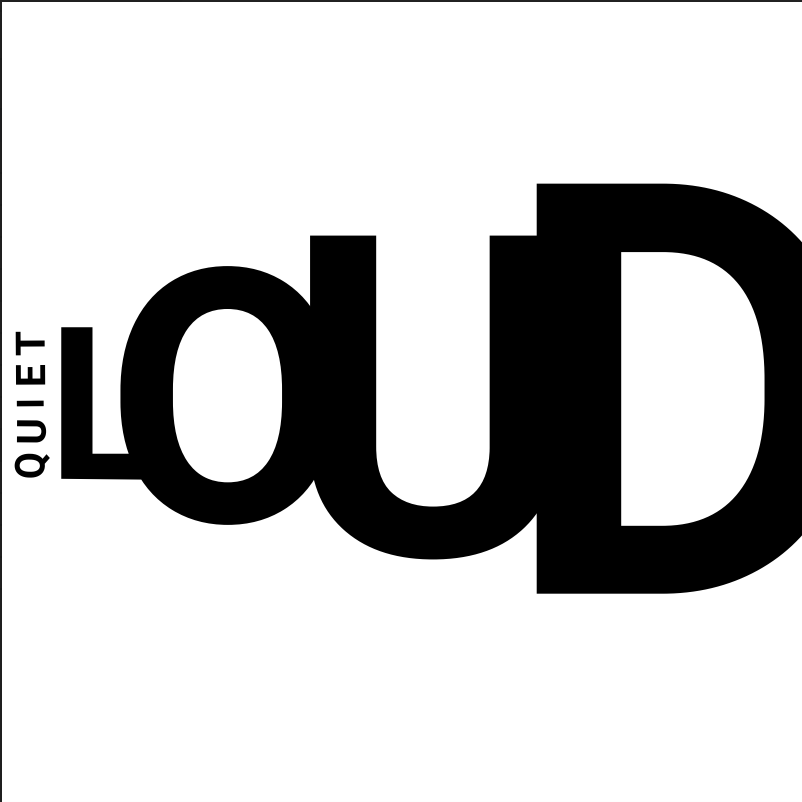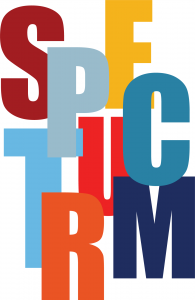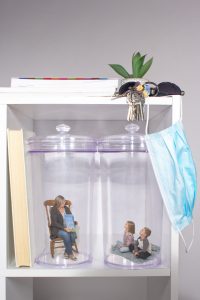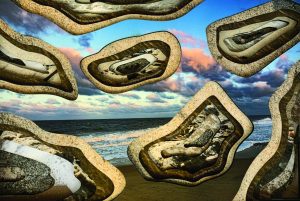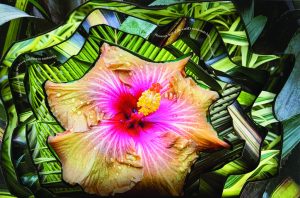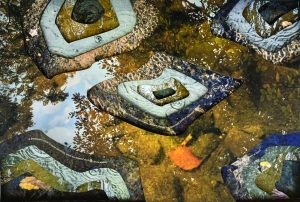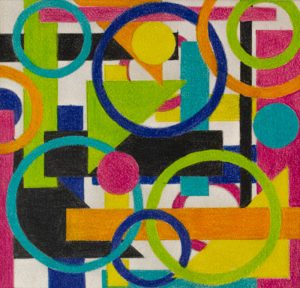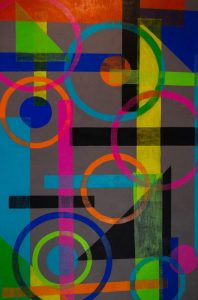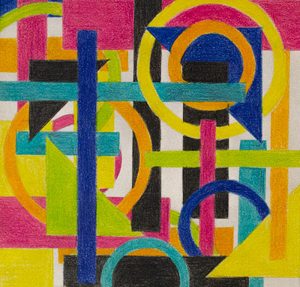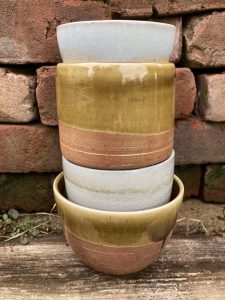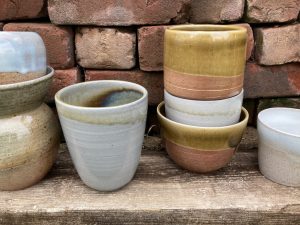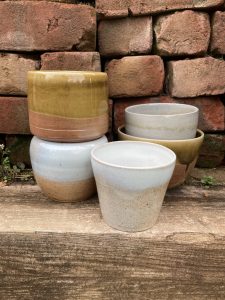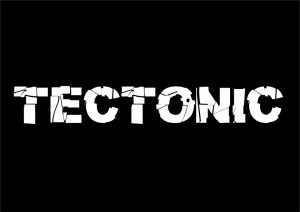
1st Exhibit: March 7 – April 8, 2022
Artist Talk: March 25, 6-8pm
Recording of talk
Isabella Africa, Jayne Baran, Hunter Barkhorn, Rachel Cosgriff, Grace Coyle, Sophia Dell’Arciprete, Patricia Neal
2nd Exhibit: April 18 – May 15, 2022
Artist Talk: April 22, 6-8pm
Recording of talk
Nasir Chandler, Rebekah Fiori, Grace Gallagher, Annie Meko, Keely Nilan, Diego Ramirez, Caitlin Thiel, Elizabeth Wash
Isabella Africa
This organic kitchen set, titled An Open Eye Into Nature, combines elements of nature and the external world with ceramic objects that are used in a household environment. My idea for this series came about while walking through campus and noticing the beautiful trees, various textures, and delicate flowers. I simultaneously saw many students traveling to class, heads down, staring at their phone screens. Feeling as though no one else was observing the details of the environment, I wanted to make this project a reflection of the beauty I saw while also creating functional objects. I feel transforming nature into something functional will make people notice and admire it more. While clay is the main medium of this series, other materials were used in creating the surface. Leaves from the campus garden and surrounding SJU area were used to create imprints on some of the vessels. Other pieces in the collection include handmade elements that add to the surface design. Examples of these include leaves, a mushroom, and coils to represent branches. The collection as a whole, aims to encompass all the different colors, textures and shapes of nature while working together as a cohesive set.
Jayne Baran
My series, It’s Never Too Late to Have a Happy Childhood, consists of three shrines built to explore themes of vulnerability in grief, personal growth and its ties to spirituality. I lost my father in the summer of 2020 and have used this series to document my personal growth through loss. I am exploring the idea of spiritualizing one’s own life and experiences and what that does to one’s personal power. My shrines aim to delve into the idea of everyday rituals, and the conscious and unconscious rituals people undergo to become who we are. In It’s Never Too Late to Have a Happy Childhood, I aim to illuminate the structure laid out in Arnold van Ganeep’s, Rites of Passage, breaking a rite of passage into three separate stages which work in tandem with the three works: separation, transition and incorporation. Given this, each work has its own title: Rituals of Sacrifice, Rituals of Liminality and Rituals of Return. In the work, I’m aiming to illustrate how we use rituals and shrines as a way to mitigate fear and gain a new clarity after trauma. The process of creating the shrines in and of itself has reflected the ideas of the work, of spiritualizing my life and turning an arbitrary ritual into a spiritual one. The wooden boxes I built consist of photographs I have taken over the course of two years, mostly self portraits, and various collaged objects sourced from thrift stores. In my work, I aim to create something holy that I have not been able to find in organized religion and to really examine what a time of tremendous growth looks like in tandem with grief.
Hunter Barkhorn
I take pictures of almost anything, it is what calms me down in life. I do this because I find joy in the process and I intend to extend that joy to the viewers of my work. Photographing nature gives me peace, even though the weather doesn’t always cooperate. There are difficult days, rainy days, long drives, overcast days, but this only makes me take better pictures. I mainly take pictures of nature because I love the outdoors and how beautiful this world can be. I want to show that in the crazy world we live in today, there is still beauty in nature that in turn is reflected in the people in this world.
For Nature’s Beauty, I focus on the beauty of nature and how humans interact with it to shed light on the good in this world that we live in. I am doing this by photographing places that attract many people. Most of these locations are in Pennsylvania, some are of the Philadelphia suburbs and other photographs are taken in rural parts of Philadelphia as well as parks throughout Pennsylvania. When I go to these parks it is a very peaceful environment and I capture the moment how I see it. I look for open spaces where I can capture a wide view of the expanse of nature. I am drawn to very quiet places, I do not like having too much activity in my images. This series focuses on what I see in nature everyday; showing my viewers the beauty of the world from my perspective. Whether it is a picture of trees with a river or just a picture of land, I am highlighting the beauty of what surrounds us. These images are meant to counter the difficulties we have all faced during the pandemic, I am capturing these moments to show individuals the amazing healing properties of nature. When everything seems impossible or difficult, just take a step outside, whether it’s at the beach, or in the forest, or even just a field, to take a look at what this world can offer us. Nature is one peaceful, healing and beautiful space item that we have left, cherish it.
Nasir Chandler
As an African American artist, I believe that my art allows me to create a visual representation of what I believe, what I’m passionate about, and what my purpose is. With photography, my work creates narratives surrounding specific issues and subjects which raise societal awareness, specifically issues in the black and brown community. This series, Black & Brushed Aside, references the major racial injustices and problems that we face. These issues include: political redlining, views of how unprofessional our culture is, the disrespect and sexualization of black women, the suspicious assumptions of a black man’s appearance, police brutality, and how society stereotypes our professions categorizing our intelligence and feelings as less than or illiterate. While these situations continue to occur, many individuals will want us to ignore them, force us to “get over it”, or utilize other issues to protest against our racial difficulties. My goal is to present an emotional set of photographs that portray many of the issues that are currently affecting in the black community. Each photo represents and references historical or real life situations that have happened. The purpose is to raise awareness and understanding of the problems that I see and why these issues should gain more attention, while many people in society try to force us to ignore them.
Rachel Cosgriff
I am an artist that uses photography as a medium to highlight the important issues of today. With this project, I am focusing on issues and narratives surrounding addiction and mental health. As my own father suffers from some of these issues, I have truly seen the instabilities and complications that life can create. I wanted to reveal my father as a whole person, featuring our great memories and the things he has taught me growing up. Addiction does not define someone, and that is an important message I want to convey through this series. Influences like Ansel Adams and Robert Frank, pushed me to use black and white photography for this work.
Grace Coyle
I draw inspiration in my work from emotional responses. I aspire to visually capture the complexities of emotion to spark a connection with my audience. I have always considered myself articulate, however in terms of the connections and feelings that overwhelm me, I have struggled to understand and communicate the various layers of these experiences. My work explores the parallel between connection and innocence. I am inspired by events in my life that have caused intense levels of emotions. I recognize and admire these experiences as events that have ignited extreme levels of personal growth.
In Entrance to Emotions, each piece attempts to dive deep into an emotional response due to a loss of connection. Using acrylic paint on various sized canvases, I work to combine my surrealist style and realist techniques with line detailing to portray a raw understanding of grief. I am excited by various interpretations and connections to themes that may not be intended in the work. This is a representation of personal deciphering of my own experiences of connection.
Sophia Dell’Arciprete
My work explores the relationship between women and growth. The series, Pieces of a Woman, 2021, explores the idea that “pieces” of ourselves are taken away from us through our life, and in turn we also are constantly adding “pieces” to ourselves. These growth moments are so crucial to one’s development as a person, especially as a woman. I chose to photograph women in my age bracket and because I identify as a woman myself. For the past couple of years, I have habitually written letters to my future self to read. These letters serve as reminders to myself of how far I’ve come and why I deserve to exist. In the studio, I asked each of my subjects to write a letter to themselves, reflecting on where they would ideally want to be in their future; the parts of themselves they would want to grow, “add” or remove. Visually, I take notice of central themes in each of their letters and collage different portraits from the session into one. The physical manipulation of the images represents those “pieces” taken away from us, but also the “pieces” we use to reform ourselves anew. This is something we do everyday and will continue to do for the rest of our lives. We are constantly building ourselves to be something better, and it is my purpose to visually manifest this through these portraits.
Grace Gallagher
For my current project, “Killer Humans”, I decided to create a series of clay animals that are endangered due to humanity’s impact on the environment. When you think of sharks or rhinos or tigers most people think they are killers, when in reality we are more dangerous than they are. I want the viewer to look at these pieces and feel moved to make a change to help this planet and the animals within it. This series incorporates sculptural and functional ceramic work, both which reveal some of the reasons why these animal species are endangered. I have a mug with an elephant trunk sculpted onto the side to form the handle; The tusk that has been cut off to represent human poaching. Poachers will cut off their tusks and sell them illegally and trade them for ivory. I also have a bowl with features of a shark on it, because people cut off their fins illegally to make shark fin soup. This bowl has a lid with a shark fin handle to represent humans taking off the fins, like taking off the lid. When the fins of sharks are cut off they throw them back into the ocean still alive, since they do not have fins they are unable to swim effectively and end up sinking to the bottom and suffocating or being eaten by other predators. I want people to know what is going on around the world and show them how much of an impact we can really make. In the future, I want to continue to bring awareness to situations like these and show people how powerful our actions can be.
Rebekah Fiori
My work displays my perception of life as a painter. Using vibrant acrylic colors, I paint on various sized canvases images of people, places and things that hold personal meaning and express my unique experiences. My goal is to invoke inspiration and wonder in my audience and introduce them to a new way of seeing the world, and their own lives through an impressionistic painting style. My series is titled,“ Col Tempo “, which in Italian, bears the meaning “with time”. The paintings I create contain deep personal symbolism and ideas rooted in the phrase “Col Tempo” . The work represents both the changing and the unmoving, the past and the present, the moments we grasp onto and the ones we keep creating and experiencing.
Annie Meko
As the role of social media has evolved, sharing images of one’s true self has become very rare. This film photography series is meant to show the beautiful flaws that are exposed once the polish and edits are gone. I used film photography because it is in itself imperfect. Film gets dust, fingerprints, and streaks on it, and when taking self-portraits with a film camera it is often difficult to get perfectly adjusted, crisp images. Self-portraiture has always been a focus in my work because of the difficulties that come with taking, working on, and sharing images of yourself. While I enjoy working in a studio environment, I want to continue to explore personal spaces as art as well and a reflection of oneself. Especially today, with the rise of Instagram, the true self is often difficult to love and share with others. The Self in conjunction with one’s personal and private living space is an important and intimate relationship. This project aims to share true, raw images of a young woman existing in her own space as she is, and to show that imperfect images can be even more beautiful and meaningful than perfectly edited ones.
Patricia Neal
As an artist, I like to explore the theme of family and roots. My series YesterYear consists of still life photography, which responds to collected family photographs. Each image is constructed from objects with symbolic meaning. I begin each photograph by laying down a surface and then I construct my sets often using different types of fabric, mirrors, paper, jewelry and household items. I often use mirrors as the walls of my image to create illusions within the space and color of the image.
I use archived family photos and pair them as diptychs with these newly constructed images. I deconstruct the archived photos, taking the colors and items seen in the image to create a new one. To connect the images together with their assigned family photograph, I use lighting gels to mimic the color and feel of the light within the family images. This allows for the color palette to stand out as the two images are presented as a unified pair. These original family photos span from the 1940s to the 1990s. In these photos, I use a layering technique where I stack the items so that only parts are seen, creating depth in the image, forming a 3-dimensional sort of collage. I place the objects in a particular composition and choose whether or not to have a central subject.
My inspiration for my work comes from the exploration of trying to find a connection to the past. I like to think about what has been passed down from family and how many things occurred for us to be where we are now, at this time. With my work, I use my own family’s history and experiences in pursuit of expressing often underrepresented aspects of the Black American family, as well as unravelling the idea of purpose and belonging.
Keely Nilan
I created ‘Love Lines’ as a tribute to my loved ones. I have difficulty vocalizing my emotions, but this project serves as a visual representation of the feelings I have for these extraordinary people.
I have always been fascinated by hands and the stories they tell. Hands are the vessels that create artworks, mend broken bits, plant flowers, and embrace one another. Looking down at the intersecting lines of a palm, I knew one day I wanted to create something that captured the dynamics of a person, their hands, and my love for them.
Each piece is about 16 by 20 inches and features a black and white photo of a family member’s hands doing an activity that is familiar to them. Choosing colors representative of each person’s aura, I wove thread in different styles and directions throughout each piece. I combined my appreciation for the simplistic, traditional nature of black and white photography and colorful, textured embroidery to communicate the everyday intricacies of love.
One of my key philosophies is to create art that is fun and free. In every other aspect of my life, I am reserved, quiet, and somewhat shy. But the use of acrylic paint, watercolors, paint markers, acrylic ink, and self-portraiture helps me release the feelings I hide. It is like a stream of consciousness turned visual. I often don’t know what the artwork is about until it is done, which leads to deeper understanding of the subliminal.
Diego Ramirez
The main focus of my series “Sun Printing, but Make it Fashion” is fashion sustainability. Clothes are the second biggest polluter in the world with large amounts ending up in landfills that take forever to decompose. “Fast fashion”, is the mass production of clothes that are usually being made by exploited workers in third world countries. Much of this type of clothing is what ends up in landfills. A main combatant against “fast fashion” is thrift shops.
The methods used in this series involve me either creating and sewing my own clothing or acquiring the garments from consignment stores. I am implementing upcycling into my project by taking something old and turning it into something new in a sustainable way. In an attempt to combine both my photography background and my new aspiration for fashion I decided to use cyanotype as a natural dye on my clothing garments.
Using Jackson Pollock inspired “paint splatters”, tie dyeing, or soaking the entire fabric I can change the color and add personality to certain garments. The cyanotype process involves brushing or painting a light sensitive solution onto a substrate, once dried you expose the substrate to sunlight and it turns into a rich blue color. It is used as an alternative photographic process. You could say that my coworker throughout this project would be the Sun. This ties in with the environmental aspect of work which involves using what is available to us in order to create art in a sustainable way.
Once each garment is designed and crafted, I take these pieces and generate a high fashion photoshoot with the garments. By using myself as a model, I am connecting myself to these pieces and showcasing how they can be worn and used. This brings me to my secondary focus in my work which is, gender inclusive fashion. Anyone can wear whatever they want that makes them feel comfortable and confident. Humans are complex creatures and we need various outlets to express ourselves. Having a gender binary restricts and limits creativity and self-expression.
Everyday people should be able to wake up and choose what they want to wear that day that will make them feel happy, regardless of what gender the clothes are assigned by society. I want people to think “I would wear that” when they look at the work in this series. I want people to start thinking of ways that they can be more sustainable when it comes to clothing, and not restrict themselves when it comes to what they want to wear.
Caitlin Thiel
My series “A Love Letter to the City” reflects on and explores my personal relationship with the city of Philadelphia. The places featured in this series of photographic postcards represent the most important places to me surrounding my experiences in Philadelphia. While this series highlights more of the touristy and eye-catching destinations in the city, I am not naive to the challenges people face here. I recognize that there are struggles in Philadelphia such as gun violence and poverty. However, in my series I wanted to focus on the beautiful aspects of the city, and why they are important to me.
I grew up in suburban New Jersey, and it was boring. There was nothing to do within walking distance, and life seemed slow. The one bright side of growing up in the suburbs was my proximity to the city. I love the city of Philadelphia. Some of my best memories have been here and my work conveys the gratitude I have for it. I went to college here, I had my first internship here, I discovered what career I wanted to pursue here, working in entertainment and social media. Equally as important, I discovered my passion for photography.
One of the first places I can remember going to in Philly was Citizens Bank Park. My family is huge Phillies fans, so we would go to games every summer when I was growing up, and this was my first real exposure to the city. When it became the time for me to choose a college, I chose to attend Saint Joseph’s University. I felt that going to school in Philly would give me opportunities that I would have not had in suburban New Jersey. During the summer of my junior year of college, I had my first internship in the city with WaWa Welcome America. I remember how stressed and nervous I was on the
first day of this internship. I had to meet everyone at The Giant Paintbrush which is a location that did not come up on Apple Maps. This internship really helped me to solidify my career goals. This series highlights locations in Philadelphia combining them with a written component that expresses my gratitude for the city.
Elizabeth Wash
This project, titled “Colligo” is my premier exhibition of ceramic work. “Colligo” is a highly detail-oriented collection of ceramic insects presented in the form of an entomologist’s assortment. Each individual insect works in singularity and as an integral component to the cohesive collection, representing a single iteration of one organism, but collectively forming a crawling conglomeration.
The key idea behind this work is to shed light on the idea of collection. We as people are collectors of things– of memories, of experiences, of events– these things compile to build individual humans with unique existence. Physical relics remind us of people and places and represent intimate relationships with these memories. A celebration and integration of my relationship to the natural world informs my fascination with insects, and their preservation. Bugs are living organisms that through preservation, adorn our walls and pepper our science classrooms. Their chitin exoskeleton retains their form and allows people to see a livelihood captured in time. Noticing the small things in life and paying excruciating attention to the intricate details of these bugs is a commonality to my work, as I continually have a personal stash of found treasures. By presenting a collection of animals that would regularly be overlooked, this project functions to bridge the viewer to the microscopic beauty that surrounds us and represent the idolatry of nature.
The process of this work is akin to its content, with an emphasis on connection and creation within nature. The majority of the material for this project is composed of various clays with a surface treatment of acrylic paint. I work using a handbuilding technique that allows me to make a physical connection to each subject I work on. Inspiration is drawn from photographs or, when available, through dead insects that have been found. These models serve to provide an accurate figure to my naturalistic work and style.
This exhibition serves to celebrate the idiosyncrasies of collecting and how this contributes to a person at large. Through utilizing a realistic approach, I am showing an appreciation to the natural world as I share with the viewer an enticing array of insects.

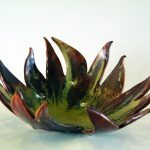
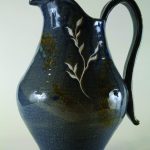
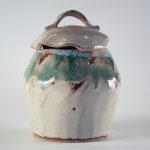
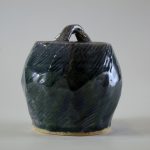
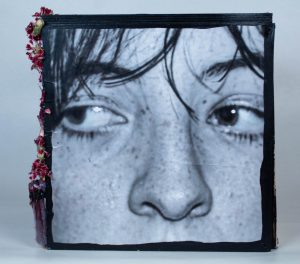
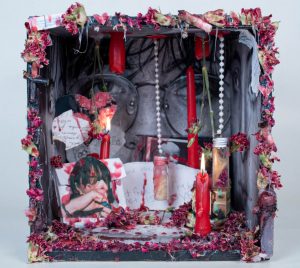
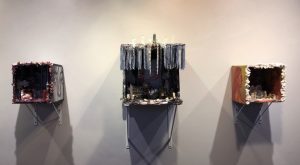

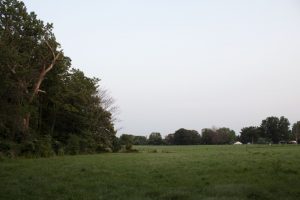
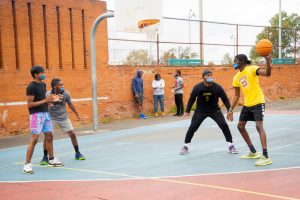
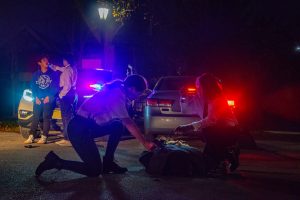
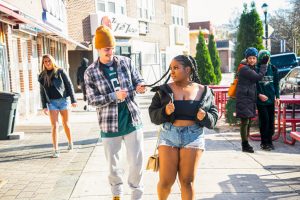
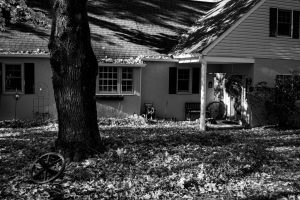
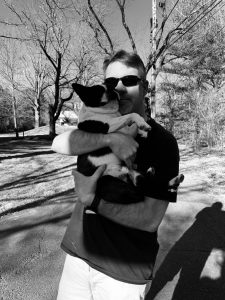

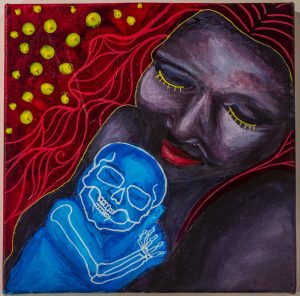
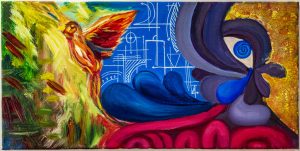
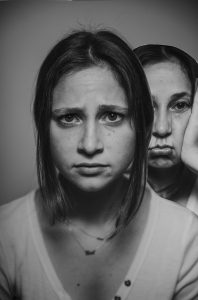
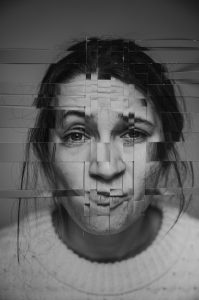
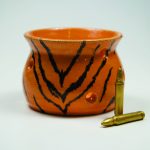
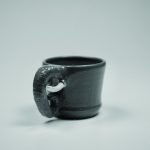
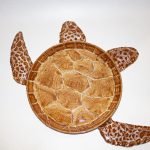

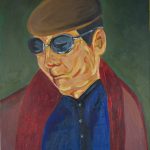

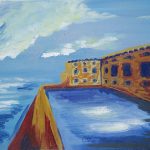
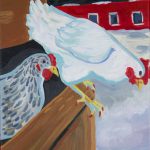

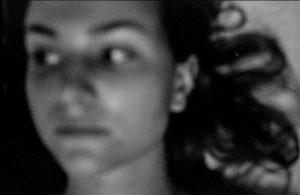
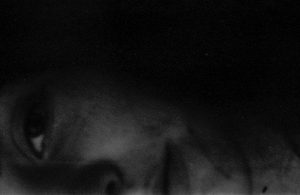
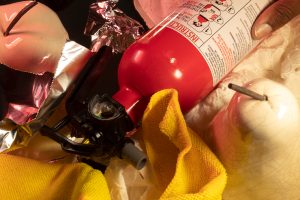
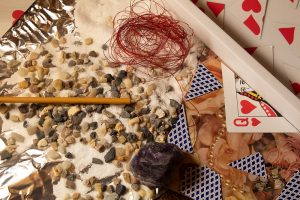
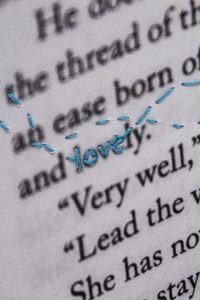
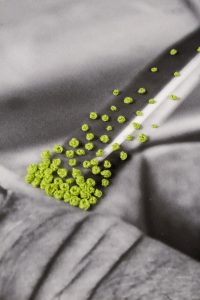
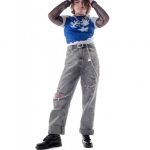

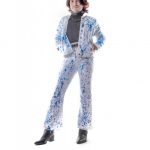
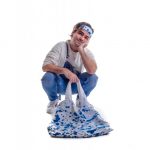
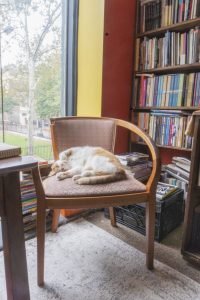

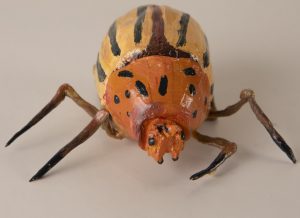
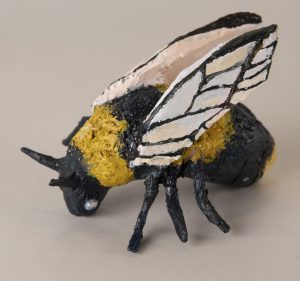
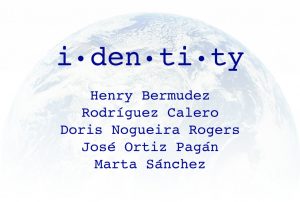
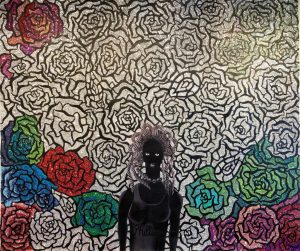

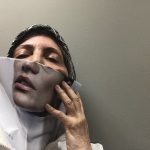

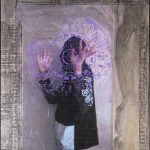

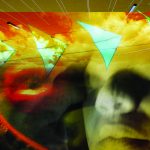
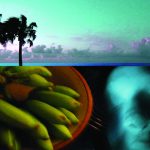
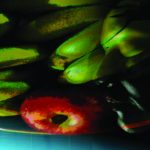
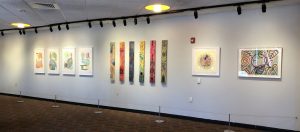
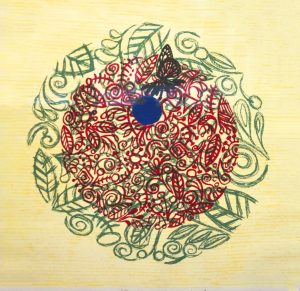 Brazil Deconstructed,
Brazil Deconstructed, 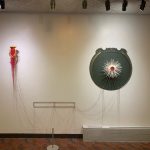
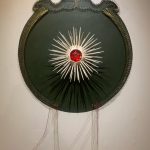
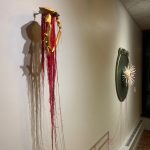
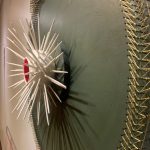
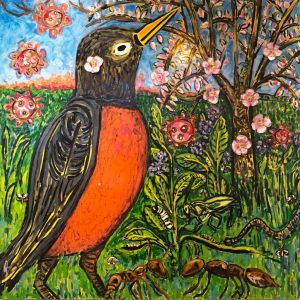 Marta Sanchez, Corona Spring, oil and enamel on tin, 4’x4’ 2020
Marta Sanchez, Corona Spring, oil and enamel on tin, 4’x4’ 2020 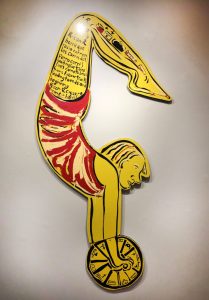 Marta Sanchez, The Acrobat, oil and enamel on tin
Marta Sanchez, The Acrobat, oil and enamel on tin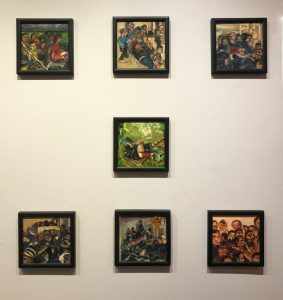 Marta Sanchez, 7 paintings of detention and immigration, oil on masonite
Marta Sanchez, 7 paintings of detention and immigration, oil on masonite
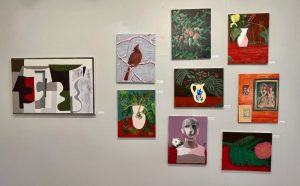
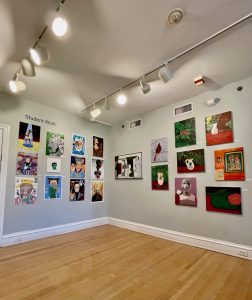
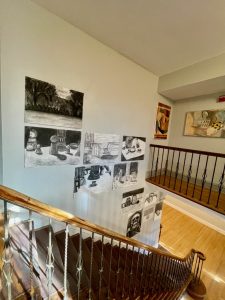
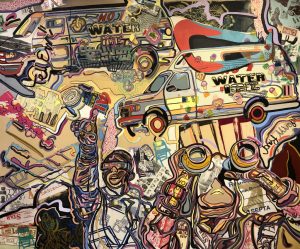 We Can See the Sky From Here
We Can See the Sky From Here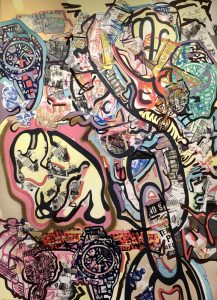
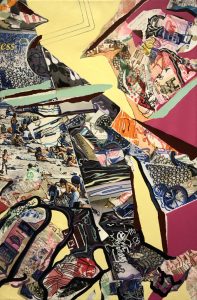

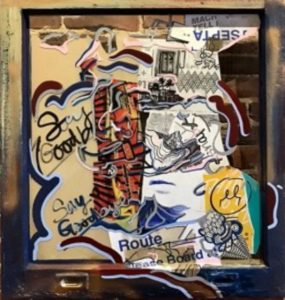
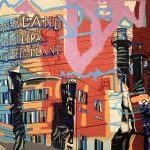
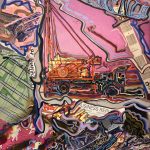
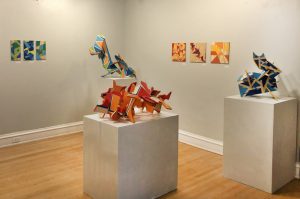 Boland Hall Student Exhibit October 4 – 29, 2021
Boland Hall Student Exhibit October 4 – 29, 2021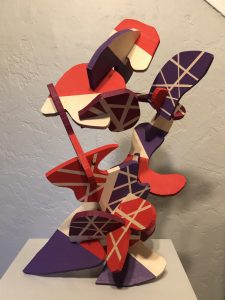 .
. 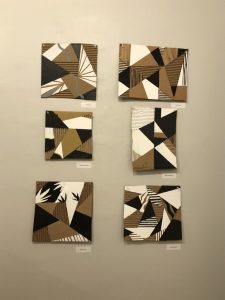 The planar forms, taken from a series of deconstructed drawings of previously created wire sculptures, are cut from cardboard and a class demo is given demonstrating how a slotting technique can create strong mechanical connections that do not need glue. A discussion is had related to relationships between positive and negative spaces, principles of three-dimensional composition, line, form, balance, rhythm, repetition, interesting sightlines from a variety of angles etc. The black and white two-dimensional paintings on cardboard included in the exhibition were created prior to the sculptures being painted, this exercise provided an opportunity for students to practice with the hard-edge painting technique and to explore various ways of incorporating the corrugation of the cardboard as an intentional design element.
The planar forms, taken from a series of deconstructed drawings of previously created wire sculptures, are cut from cardboard and a class demo is given demonstrating how a slotting technique can create strong mechanical connections that do not need glue. A discussion is had related to relationships between positive and negative spaces, principles of three-dimensional composition, line, form, balance, rhythm, repetition, interesting sightlines from a variety of angles etc. The black and white two-dimensional paintings on cardboard included in the exhibition were created prior to the sculptures being painted, this exercise provided an opportunity for students to practice with the hard-edge painting technique and to explore various ways of incorporating the corrugation of the cardboard as an intentional design element.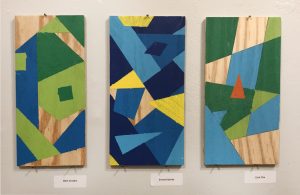
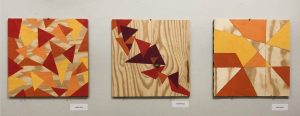
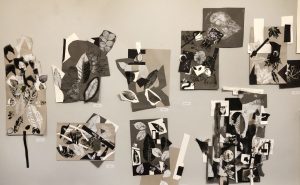
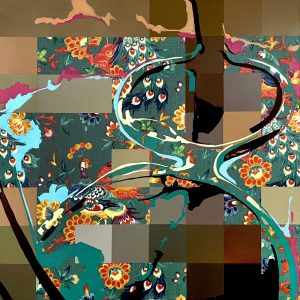 “Denotations (#sunglasses, metallique.productions)”
“Denotations (#sunglasses, metallique.productions)”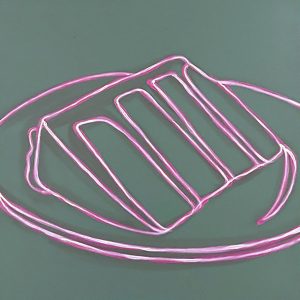
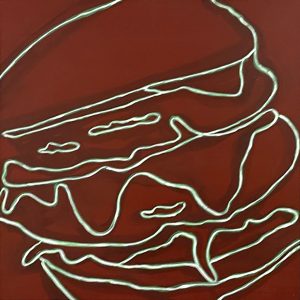
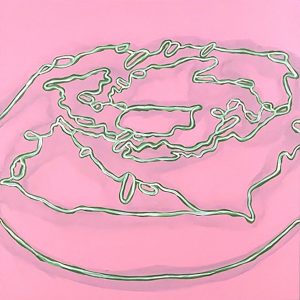
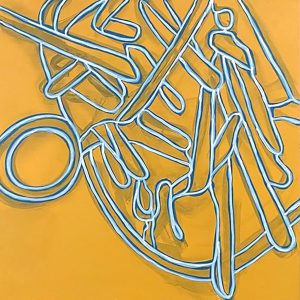
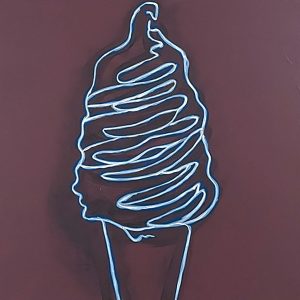
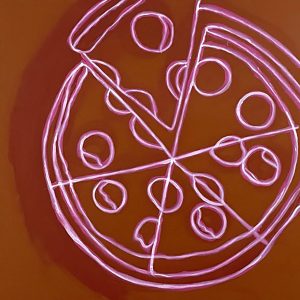
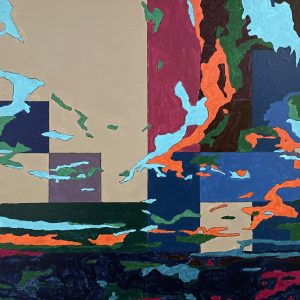
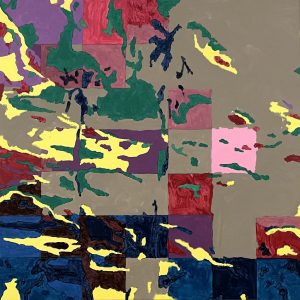
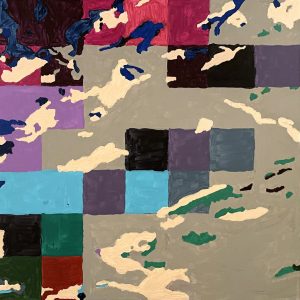
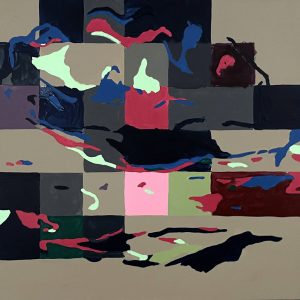
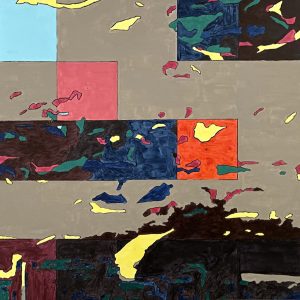
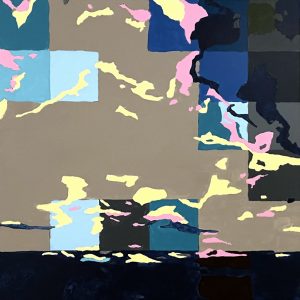
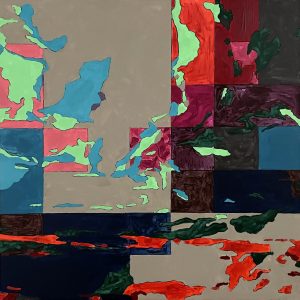

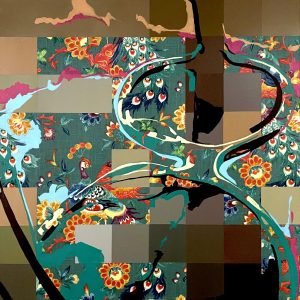
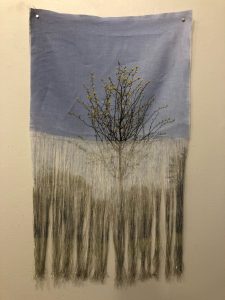
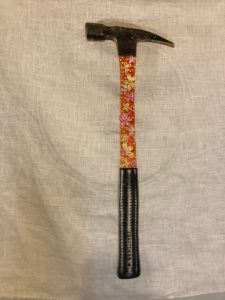
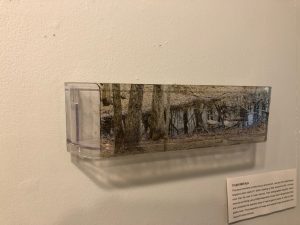

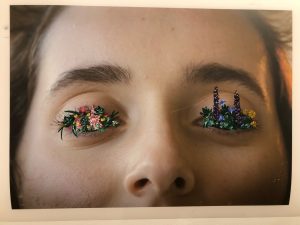 Things are not always what they seem. This piece narrates how society teaches us to trust and believe in only the things we can see and judge by appearances. This distrust and negation of the socially unacceptable is reflected in everyday society, people and politics. We have become a vulnerable society believing only what we see to be the truth.
Things are not always what they seem. This piece narrates how society teaches us to trust and believe in only the things we can see and judge by appearances. This distrust and negation of the socially unacceptable is reflected in everyday society, people and politics. We have become a vulnerable society believing only what we see to be the truth.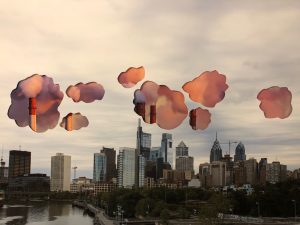
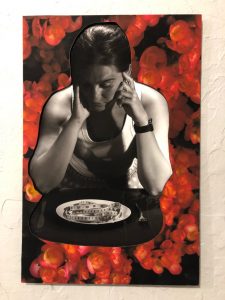 “I had an eating disorder for 2 -3 years and it took a lot for me to overcome it. At this point in my life, I am flourishing like never before and am the healthiest I have ever been (mind and body).” Rachel depicts her personal life story in this piece. Through photography she displays her emotions and trials of living with anorexia. The subject (Rachel) is dark, sad and struggling. The flowers on the skirt represent Rachel’s current situation –flourishing, happy and healthy.
“I had an eating disorder for 2 -3 years and it took a lot for me to overcome it. At this point in my life, I am flourishing like never before and am the healthiest I have ever been (mind and body).” Rachel depicts her personal life story in this piece. Through photography she displays her emotions and trials of living with anorexia. The subject (Rachel) is dark, sad and struggling. The flowers on the skirt represent Rachel’s current situation –flourishing, happy and healthy.